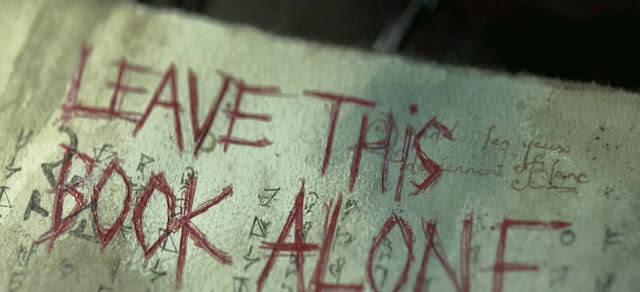The Ash Tree
1975
Dir. Lawrence Gordon Clark
Part of the BBC’s annual series A Ghost Story for Christmas, which ran from 1971 to 1978 and featured some of the small screen’s most chilling moments, The Ash Tree was the last of several MR James adaptations directed by Lawrence Gordon Clark. Written for television by David Rudkin, It stars Edward Petherbridge in the dual role of Sir Richard, an 18th century aristocrat who inherits the vast estate of his late uncle, and of Sir Matthew, his 17th century ancestor whose role in local witch trials, and the death of Ann Mothersole (Barbara Ewing), haunts Sir Richard.
Dir. Lawrence Gordon Clark
Part of the BBC’s annual series A Ghost Story for Christmas, which ran from 1971 to 1978 and featured some of the small screen’s most chilling moments, The Ash Tree was the last of several MR James adaptations directed by Lawrence Gordon Clark. Written for television by David Rudkin, It stars Edward Petherbridge in the dual role of Sir Richard, an 18th century aristocrat who inherits the vast estate of his late uncle, and of Sir Matthew, his 17th century ancestor whose role in local witch trials, and the death of Ann Mothersole (Barbara Ewing), haunts Sir Richard.
With a slim running time (just over 30 minutes) The Ash Tree is one of the shortest entries in the series, but it is also one of the densest. The amount of detail and information packed in, without compromising or diluting the impact of the source material, is admirable. Clarke manages to convey events and flashbacks by utilising an interesting narrative structure and some beautifully subtle editing.
Various scenes are linked by unbroken conversation or certain locations, particularly the moments that lead into the flashbacks. The segues into past events and the plight of Sir Richard’s uncle are initially very gradual; we see figures in silhouette entreating Sir Matthew, while Sir Richard sits in his study. The way the scene is cut makes it seem like they are addressing Sir Richard. There are also notable differences in costume, hairstyle and language which clarify the timeframes the story switches between. Sir Richard also unwittingly repeats certain things his uncle said and these moments form an aural bridge into the past. Petherbridge (Blood on Satan’s Claw) delivers an assuredly restrained performance. The duel role and notions pertaining to inherited memories and sins of the fathers visited upon the young, seems to have had no small influence on HP Lovecraft’s The Case of Charles Dexter Ward.
The Ash Tree differs from other James adaptations because the supernatural elements are slightly more overt and much less ambiguous. Less a ghost story and more a depiction of a dying witch’s curse on the bloodline of one of her accusers, Clarke’s adaptation is typically faithful and his rendering of James’ tale of witchcraft, dark family secrets and monstrous creatures is drenched in atmosphere and foreboding. Clarke only strays from the material in order to open up certain subtext merely hinted at in James’s story, namely sexual repression and the desire Sir Richard’s ancestor harboured for the woman he accused of fraternising with the devil, Ann Mothersole. The witch’s spidery offspring - revealed to be dwelling in the titular tree outside the protagonist’s window - are genuinely creepy (James is said to have been terrified of spiders), though the special effects utilised to bring them to life are somewhat dated, the glimpses of their sub-human faces and the wretched sounds they make – akin to a baby crying – are immensely disturbing. Their movements are relegated to the shadows. When they scuttle through Sir Richard’s window we’re treated to a most unsettling shot of them nestling into bed beside him, scurrying over his sleeping body and making sounds which suggest they're suckling...
As with many of the BBC’s other MR James adaptations, The Ash Tree contains elements of Folk horror; indeed it features a number of similarities to one of the prime examples of this fascinating sub-genre: Witchfinder General. One scene in particular – the torture and execution of Ann Mothersole, with its nudity and implied violence, is very reminiscent of imagery from Michael Reeve’s grimy classic. Further accentuating the film’s folk horror aspects is the subplot involving the discovery of dead livestock and other wild life in the countryside surrounding Sir Richard’s house – and Ash tree. This not only hints at the dark nature of the tree – and what lurks in its rustling branches – but conveys the plight of farming communities, and the fears they would have had which may have made them susceptible, and desperate enough, to be taken in by a witchfinder’s folly. Their desperation and hopelessness fuels local superstitions.
 |
| An illustration by Nick Gucker hinting at the terrors that scuttle through Sir Richard's window |





